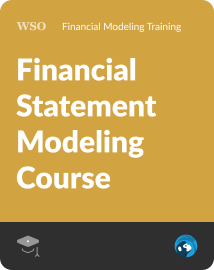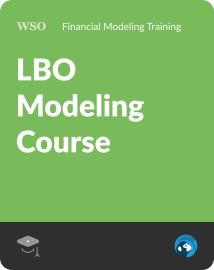Market Value
The price at which an asset would trade in a competitive auction setting.
What Is Market Value?
The price at which an asset would trade in a competitive auction setting is referred to as market value or OMV (Open Market Valuation).
Open market value, fair value, and fair market value are frequently used interchangeably, although they have different meanings under various standards and apply differently in some situations.
International Valuation Standards defines open market valuation as:
"The estimated amount for which a property should exchange on the date of valuation between a willing buyer and a willing seller in an arms-length transaction following proper marketing wherein each party had acted knowledgeably, prudently, and free from coercion."
The open market valuation is the most likely price that a property will fetch in a competitive market under all circumstances necessary for a fair sale, with the buyer and seller acting responsibly, knowing what they are doing, and assuming that there are no unwarranted influences on the price.
The completion of a sale on a particular date and the transfer of ownership from the seller to the buyer under the following circumstances are implicit in this definition:
- Usually, both the buyer and the seller are motivated
- Both parties are knowledgeable or well-advised, and they are both acting in what they each believe to be their own best interests.
- Exposure to the open market is permitted for a reasonable amount of time.
- Payment is made in the form of cash in U.S. dollars or in accordance with similar financial arrangements.
- The price represents the market value of the sold property, unaffected by any unique or innovative financing arrangements or sales discounts made by parties involved in the transaction.
Key Takeaways
- Investors use a variety of metrics to assess a company's value, and one of them is MV or a security's value in the eyes of the market.
- It demonstrates the MV of an asset to investors and is frequently used in conjunction with other metrics to determine the accuracy of an asset or firm's valuation.
- Both buyers and sellers benefit from this metric's clarity and transparency, but its value changes over time depending on various factors like the industry and the economy.
- The industry, the company or asset is in, its overall profitability, how much debt it has taken on, and other factors all impact the MV.
- A mathematical ratio such as the P/E ratio, earnings per share (EPS), or book value per share can be used to express open market valuation.
How to determine the Market value
A good or service's market value is the highest price a willing buyer is willing to pay and the lowest price a willing seller is willing to accept for it if both the buyer and the seller have all the information required for the purchase and the good or service has been exposed to the market for a reasonable period of time.
Because it depends on a number of metrics, no single formula is used to calculate open market valuation.
Consider market capitalization, a comparable but entirely different metric for assessing how financially sound a company is if you're looking for a quick way to calculate open market valuation.
It can be difficult to evaluate the open market valuation of private companies whose financial information is not readily available.
In order to contextualize a private company's performance, it is typically done by comparing its value to publicly traded companies in the same sector with comparable sizes and growth rates.
To determine a company's OMV, you would generally multiply the total number of outstanding shares by the current share price.
If Apple, for instance, has 100,000 outstanding shares with a price per share of $154.48, its market value would be about $15.45 million (100,000 x $154.48).
What factors influence Market value?
An open market valuation is a dynamic measurement that shifts significantly over time and takes into account a variety of different aspects.
Long-term growth potential, share supply and demand, and valuation ratios used to determine whether a stock is overpriced, underpriced, or priced fairly are all factors that are taken into account.
The following open market valuation ratios are frequently used to assess a company's stock:
An indicator of how profitable a company is on a per-share basis, earnings per share (EPS) is a metric that is frequently utilized by investors in the process of valuing a stock or company.
Earnings per share have the potential to have a positive or a negative impact on how investors perceive the value of a company because higher earnings per share indicate a more profitable business.
The book value per share (BVPS) ratio compares the total equity held by stockholders to the total number of outstanding shares. In other words, this calculates a company's per-share total assets and fewer total liabilities.
Higher book values typically indicate that a stock is undervalued and, as a result, can influence how the market views the asset or the company.
3. Price-to-earnings ratio (P/E ratio)
The price-earnings ratio calculates the earnings per share of a company in relation to the cost of its shares. The ratio is used to assess a company's value and determine whether it is fair or not.
A high P/E ratio indicates that a stock may be overvalued by the market and that its price is high relative to its earnings.
Smaller, more specialized businesses or sectors are valued significantly lower than their more well-known, billion-dollar competitors in the open market. When the value of a company is estimated to be higher, its open market valuation will also be higher.
Pros and cons of market value
The phrase "market value" refers to how much a company or asset is valued by market participants on the financial market.
It is frequently used to refer to a company's market capitalization, which is determined by dividing the total number of outstanding shares by the current share price.
Pros
- It can be determined whether or not a company's shares are overvalued or undervalued based on the difference between MV and fair value.
- They discovered that investors and traders frequently buy and sell stocks. They can thus benefit from the difference in prices when the market corrects itself.
Cons
- There must be historical data available to compare the open market valuation of one share to another in order to determine a share's MV.
- A company's value cannot be used to determine whether or not market participants should be interested in the stock without a comparable figure. A standard must exist to which other open market valuations can be compared.
- Given that share prices are influenced by changes in supply and demand, it can also be considered to be a fairly objective measurement. This implies that an asset's open market valuation only reflects what a buyer is willing to pay for it, not its actual value.
Market value vs. Book value
In order to determine whether an asset is valued appropriately, book value and open market valuation are typically compared. The value of a company as reported in its books, or balance sheet, is known as book value.
The MV of a company is helpful in removing the ambiguity surrounding an asset's value. The value of a product isn't always agreed upon by buyers and sellers, and each party has different objectives—buyers want to pay less, while sellers want to charge more.
It offers a reasonable estimation of the worth or value of any specific asset.
You subtract a company's total assets from its total liabilities to determine its book value.
Calculating book value requires a little more effort than market value. Since the stock is being traded at a discount, stock is generally regarded as being undervalued if its open market valuation is significantly lower than its book value. The opposite, though, isn't always accurate.
Profitable businesses frequently trade at a premium to their book values on the open market.
This is due to the fact that investors are bullish on their prospects for growth and expansion and that some businesses have greater earning power or the capacity to turn a profit than their current assets.
However, in some circumstances, a higher MV than book value might actually be a sign that the asset is overpriced.
Market Value FAQs
Open market valuation is "the true underlying value," as opposed to market price, which is "the price at which one can transact."
It is the price at which a home would sell on the open market after deducting a reasonable sum for costs like brokers' fees. The price that a buyer is willing to pay on the open market.
The MV per share is the price at which investors are willing to purchase common stocks and represents the current value of a company's shares.
It is determined by dividing the total open market valuation of the company by the total number of shares that are currently outstanding in the company.
The elimination of ambiguity and uncertainty in the process of determining the value of an asset is one of the primary advantages offered by open market valuation. This advantage is one of the primary reasons why open market valuation is important.
The valuations or multiples that investors assign to companies, such as price-to-sales, price-to-earnings, enterprise value-to-EBITDA, and others, determine MV. MV increases as valuations rise.
Researched and authored by Shriya Chapagain | LinkedIn
Free Resources
To continue learning and advancing your career, check out these additional helpful WSO resources:









or Want to Sign up with your social account?